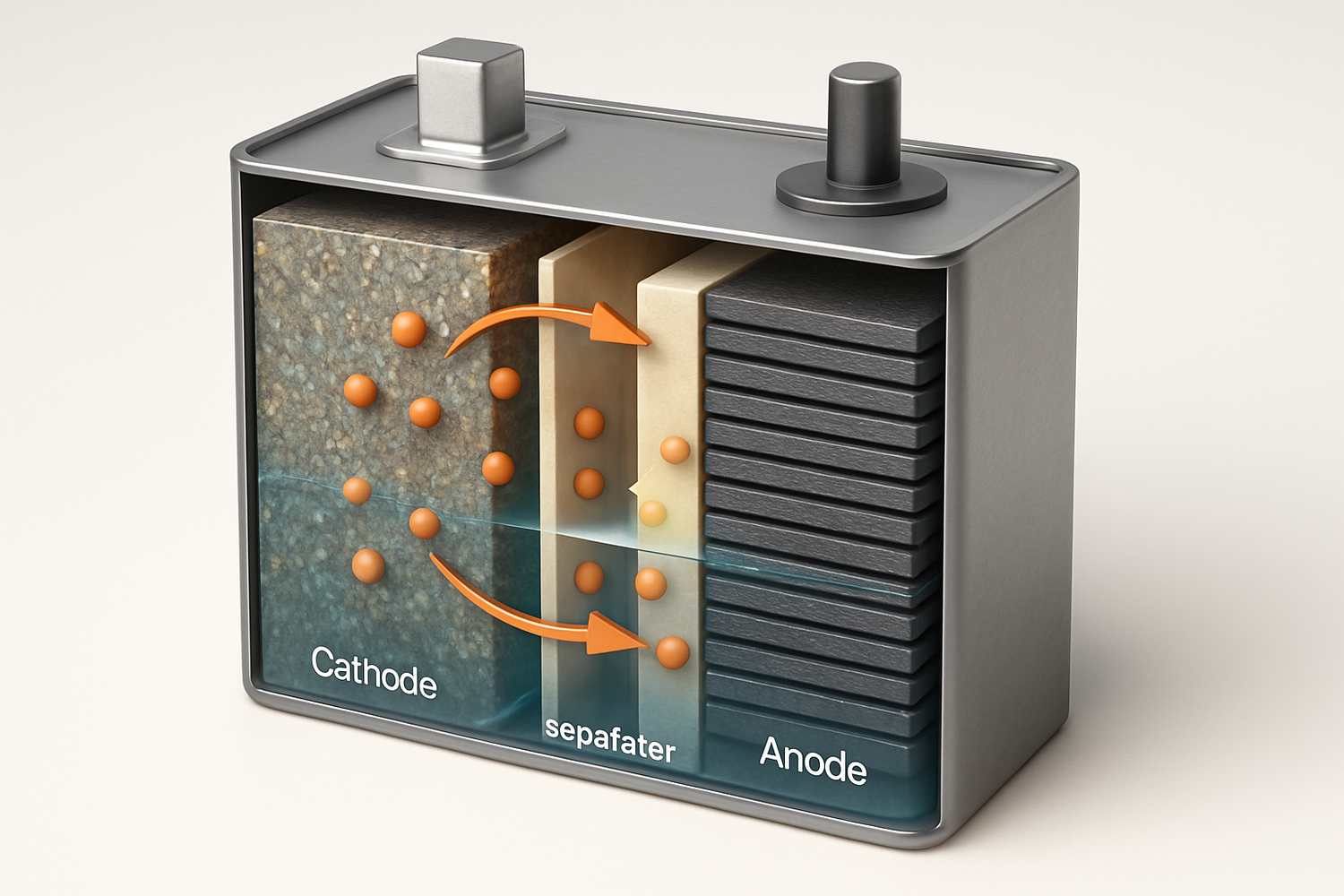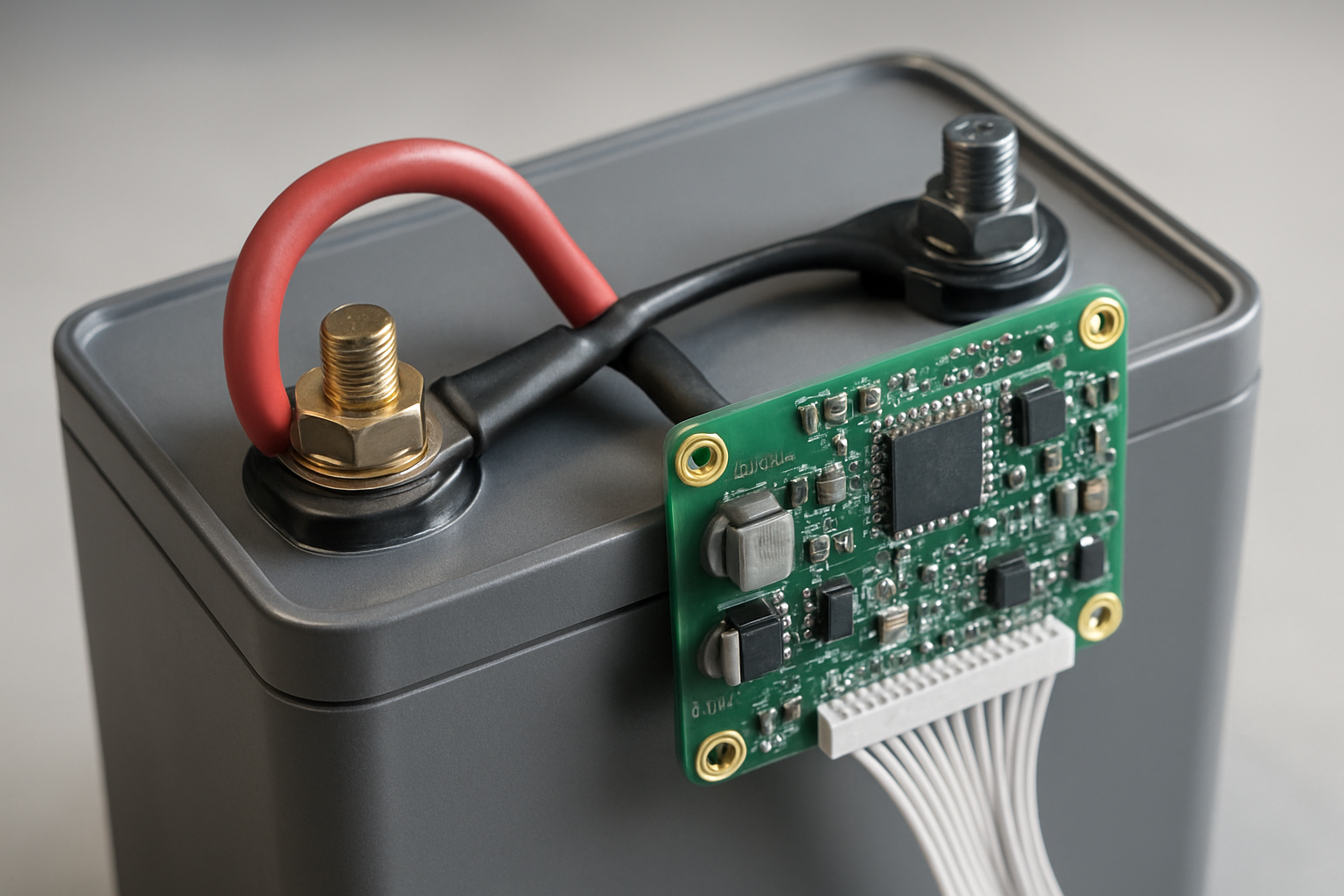Energy storage is a critical component of modern solar power systems. Among the various battery technologies available, the Lithium Iron Phosphate (LiFePO4) battery has become a prominent choice for residential and commercial applications. Its unique combination of safety, longevity, and performance makes it a compelling option for anyone looking to achieve greater energy independence. This guide provides a detailed look into LiFePO4 technology, from its fundamental chemistry to its practical applications in solar energy storage.
1. The Chemistry Behind LiFePO4 Batteries
To appreciate the benefits of a LiFePO4 battery, it's helpful to understand its inner workings. This technology is a specific type of lithium-ion battery, but with a distinct chemical composition that sets it apart from more conventional options like those found in smartphones and laptops.
1.1. Core Components and How They Work
Like other lithium-ion batteries, a LiFePO4 battery consists of four main components: a cathode (positive electrode), an anode (negative electrode), a separator, and an electrolyte. The key difference lies in the cathode material. LiFePO4 batteries use lithium iron phosphate (LiFePO4), a remarkably stable compound. The anode is typically made of graphite.
The process of charging and discharging involves the movement of lithium ions. During charging, lithium ions move from the LiFePO4 cathode, through the electrolyte, and are stored in the graphite anode. When you draw power from the battery, this process reverses: the lithium ions travel back to the cathode, releasing electrons that create an electrical current.
1.2. The Olivine Structure: A Key to Stability
The LiFePO4 cathode material has a unique three-dimensional crystal structure known as an olivine structure. This structure is incredibly robust. The strong covalent bonds between the phosphorus and oxygen atoms (P-O) make the material thermally and chemically stable. Unlike other lithium-ion chemistries, the LiFePO4 structure does not easily break down or release oxygen, even at high temperatures or if overcharged. This intrinsic stability is a primary reason for the battery's exceptional safety profile, significantly reducing the risk of thermal runaway—a dangerous chain reaction of overheating.
2. Key Advantages of LiFePO4 Technology
After years in the solar and energy storage industry, I've seen firsthand how LiFePO4 batteries consistently outperform older technologies. Their advantages are not just theoretical; they translate into real-world reliability and long-term value for homeowners and businesses.
2.1. Superior Safety and Thermal Stability
Safety is a non-negotiable aspect of any home energy system. LiFePO4 chemistry is inherently safer than other lithium-ion variants, such as those using cobalt. The material's high thermal stability means it can withstand high temperatures without decomposing or catching fire. This makes LiFePO4 batteries an excellent choice for installations in various environments, providing peace of mind. For more details on this topic, you can read our article on LiFePO4 Safety: Debunking Common Battery Storage Myths.
2.2. Exceptional Lifespan and Cycle Life
One of the most significant benefits of LiFePO4 batteries is their long service life. They can endure thousands of charge-discharge cycles while retaining a high percentage of their original capacity. A high-quality LiFePO4 battery can offer between 3,000 and 10,000 cycles, depending on the depth of discharge and operating conditions. This far surpasses traditional lead-acid batteries, which typically last for only a few hundred cycles. This longevity makes them a sound long-term investment. The U.S. Department of Energy has also highlighted the durability of LFP chemistry as a key factor in its growing adoption for stationary storage.
2.3. High Efficiency and Usable Capacity
LiFePO4 batteries are highly efficient, meaning that most of the energy you put in during charging is available for use. They also offer a high depth of discharge (DoD), allowing you to use nearly the entire stored capacity without damaging the battery. A 100Ah LiFePO4 battery, for example, can provide close to 100Ah of usable power, whereas a lead-acid battery of the same rating might only offer 30-50Ah. This efficiency is crucial in solar systems, where maximizing the use of every generated watt is important. For an in-depth look at this, see our article: Deep Cycle Explained: Why LiFePO4 Batteries Dominate.
3. LiFePO4 vs. Other Lithium-Ion Chemistries
While "lithium-ion" is often used as a blanket term, the specific chemistry matters greatly. Comparing LiFePO4 with other common types, like Nickel Manganese Cobalt (NMC), reveals important distinctions in performance, safety, and cost.
3.1. Safety Profile: LiFePO4 vs. NMC
NMC batteries, commonly used in electric vehicles and consumer electronics, offer higher energy density, meaning they can store more energy in a smaller space. However, this comes with a trade-off in safety. NMC chemistry is more susceptible to thermal runaway if damaged or mismanaged. LiFePO4's stable structure provides a significant safety advantage, making it a more suitable choice for residential energy storage where safety is paramount. Our detailed comparison, LiFePO4 vs Lithium-Ion: Which Is Best for Solar?, explores this topic further.
3.2. Lifespan and Long-Term Value
LiFePO4 batteries consistently offer a longer cycle life than NMC batteries. While an NMC battery might last for 1,000-2,300 cycles, a LiFePO4 battery can easily exceed 3,000 cycles under similar conditions. Although the upfront cost of LiFePO4 can sometimes be higher, its extended lifespan results in a lower total cost of ownership over the system's lifetime. According to the International Energy Agency (IEA), the falling costs and long life of LFP batteries are major drivers of their increased deployment in stationary storage systems.
3.3. Performance Characteristics Comparison
The following table summarizes the key differences between LiFePO4 and NMC batteries:
| Feature | LiFePO4 (Lithium Iron Phosphate) | NMC (Nickel Manganese Cobalt) |
|---|---|---|
| Safety | Excellent thermal and chemical stability | Higher risk of thermal runaway |
| Cycle Life | 3,000 - 10,000+ cycles | 1,000 - 2,300 cycles |
| Energy Density | Lower (90-160 Wh/kg) | Higher (150-220 Wh/kg) |
| Environmental Impact | Cobalt-free, non-toxic materials | Contains cobalt, raising ethical and environmental concerns |
| Primary Application | Stationary energy storage, heavy-duty vehicles | Electric vehicles, portable electronics |
4. Practical Applications in Solar Energy Systems
LiFePO4 batteries are exceptionally well-suited for solar energy storage, whether for a home, farm, or off-grid cabin. Their characteristics align perfectly with the demands of renewable energy systems.
4.1. Home Energy Storage and Energy Independence
For homeowners with solar panels, a LiFePO4 battery system stores excess energy generated during the day for use at night or during power outages. This reduces reliance on the grid, lowers electricity bills, and provides a reliable backup power source. High-performance home energy storage systems often integrate LiFePO4 batteries with a hybrid inverter and solar panels for a seamless, all-in-one solution. These systems can be scaled to meet the specific energy needs of a household. If you're considering this, our guide on How to Build a Home Battery Storage System with LiFePO4 is a great resource.
4.2. Off-Grid Solar Solutions
In locations without access to the utility grid, LiFePO4 batteries are a cornerstone of reliable off-grid solar solutions. Their durability, low maintenance requirements, and ability to handle deep cycling make them ideal for providing consistent power in remote settings. From powering lights and appliances in a cabin to running equipment on a farm, these batteries offer the resilience needed for true energy independence. The International Renewable Energy Agency (IRENA) notes that advancements in battery storage are crucial for expanding energy access in off-grid communities.
4.3. Choosing the Right LiFePO4 Battery
Selecting the right battery for your system involves considering several factors:
- Capacity (kWh): This should be based on your daily energy consumption and desired level of backup power. A typical family might need a 5-15 kWh battery.
- Voltage (V): The battery voltage (e.g., 12V, 24V, or 48V) must be compatible with your solar inverter and charge controller. Higher voltage systems are often more efficient for larger home systems.
- Certifications: Look for batteries that meet key safety standards like UL 1973, which is specific to stationary energy storage systems, and UN38.3 for transportation safety.
- Brand Reputation: Choose a manufacturer with a proven track record in the solar and storage industry, offering reliable products and solid warranties.
For more guidance, explore our articles on 7 Reasons to Choose a 12V LiFePO4 Lithium Battery and Choosing Your 100Ah Lithium Battery for Energy Storage.
Final Thoughts on LiFePO4 Technology
The LiFePO4 battery represents a significant advancement in energy storage technology. Its foundation of safety, longevity, and reliable performance makes it an ideal choice for anyone serious about harnessing solar power effectively. By offering a path to greater energy independence and long-term value, LiFePO4 batteries are not just a component; they are an enabling technology for a more resilient and sustainable energy future. As you plan your solar energy system, understanding the fundamentals of LiFePO4 will help you make an informed decision that pays dividends for years to come.
Disclaimer: This article is for informational purposes only and does not constitute financial or investment advice. Consult with a qualified professional before making any decisions regarding your energy system.





Leave a comment
All comments are moderated before being published.
This site is protected by hCaptcha and the hCaptcha Privacy Policy and Terms of Service apply.